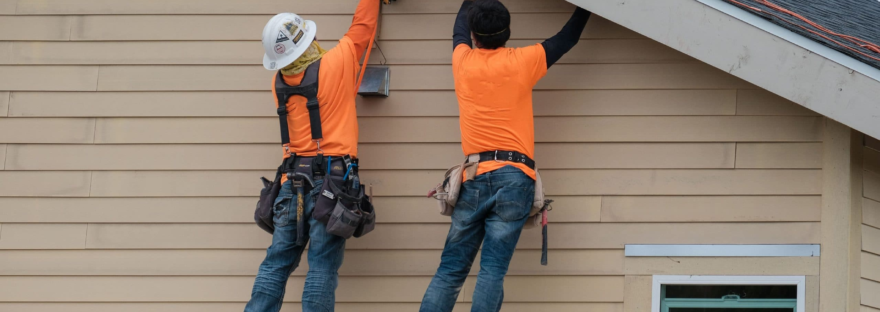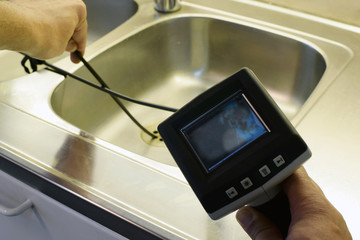Siding helps to protect homes and buildings from harsh weather conditions. It also adds to the aesthetic of a structure and can increase its value when properly installed. For more information, click the link https://www.topnotch-roofing.com/ provided to proceed.
Choosing the right siding will depend on what your preferences and budget are. There are many options to choose from. Some of the most common include natural wood, vinyl, and brick.

It’s no secret that your home’s curb appeal is important in selling it. After all, it’s a lot like the cover of a book: if the outside doesn’t look exciting, potential buyers may walk right past it and keep looking for something better.
That’s why it’s worth investing in your home’s exterior to enhance its curb appeal. From painting the front door to adding a flower garden, you can do plenty of DIY projects to make your house look more attractive. Some of these improvements may be relatively inexpensive, while others could cost a little more. However, they will all help you create a better first impression on anyone visiting your home or driving by it.
One of the best ways to increase your curb appeal is to choose siding that complements your house’s style. There are many different types of siding, each with its unique look. For example, wood siding is popular because it offers a natural and cozy appearance. It’s also durable, which means it will last long. Another option is vinyl, a great choice for homeowners who want to save money on their energy bills.
Enhancing your curb appeal will help you make the most money if you plan to sell your home. Studies have shown that homes with good curb appeal sell faster and for more money than those without. Additionally, potential buyers will assume that the inside of your home is well-maintained and appealing if the outside looks nice.
If you need help to improve your curb appeal, consulting with a real estate agent is always a good idea. They can offer suggestions based on their experience in the market and what has effectively attracted buyers in your area. This will help you maximize the investment return and sell your home quickly. In addition, a real estate agent can give you an idea of what improvements would be the most affordable for your budget.
When choosing siding for your home, you must consider its aesthetics and durability. Durability depends on how much you use your house, your region’s climate, and the siding itself. Some types of siding, like wood, have a longer lifespan than others, but each option has pros and cons.
The most durable types of siding are engineered wood, fiber cement, metal, and masonry. Using an exterior insulation finishing system (EIFS) can help to extend the life of your siding, as can regularly washing it and addressing minor damage or wear as soon as you see it.
Wood sidings, such as cedar and clapboard, are attractive and long-lasting. However, they’re more susceptible to moisture than other types of siding. When moisture seeps through the siding and into the sheathing underneath, it can cause rot or mold.
Vinyl siding is another low-maintenance option that can be a good choice for many homeowners. It’s easy to clean and comes in various colors and styles. It’s also fire-resistant and incredibly strong, although it does fade quickly in direct sunlight.
Other high-end choices include masonry siding, such as stucco and brick veneer. While these options offer a classic look, they may not be as durable as other sidings, particularly in cold or wet climates.
Fiber cement siding is a good option for many regions, as it’s durable and energy-efficient. It’s also more environmentally friendly than traditional wood siding because it uses fewer resources to produce. In addition, it’s treated with zinc borate during the manufacturing process to help prevent rot and fungal decay. Some manufacturers, such as James Hardie, even have a 50-year product warranty.
Another great option for durability is aluminum siding, which can last 40 years or more and stands up to moisture better than other wood options. However, it does tend to fade over time and can rust if exposed to salt water or hailstorms. It also dents easily and requires repainting every few years.
Homeowners choose to replace their siding for various reasons, including increasing curb appeal and enhancing the home’s energy efficiency. New siding can protect the underlying structure from moisture and extreme temperatures and help regulate the interior temperature. It can also boost the value of the property and reduce maintenance costs.
When choosing siding, it is important to consider its r-value, which measures how well it insulates. The higher the R-value, the better it will prevent unwanted heat transfer and lower utility bills. Whether you choose vinyl, wood, or fiber cement, ensure the product has an r-value of 3.0 to 4.0, significantly improving your home’s energy efficiency.
In addition to the r-value of the siding itself, other factors such as house wraps, weather barriers, and proper installation impact how energy efficient it is. Ensure the contractor you hire is familiar with these issues and can install them correctly to avoid leaks that could lower your home’s energy efficiency.
Adding energy-efficient siding is a wise investment in your home that will ultimately pay for itself with lower utility bills and increased comfort. It’s also a great way to make your home more environmentally friendly, as less energy use reduces carbon emissions and waste.
Updating your home’s exterior has many benefits, from improved curb appeal to increased home value and reduced maintenance costs. The key is to choose the right siding for your home based on your needs and budget. Before investing in new siding, consider how much it will save you on energy bills and how long it will take to earn back the upfront cost.
The best choice for homeowners is a fiberglass or cellulose-based fiber cement cladding, which can be painted in various colors and offers different textures and visual styles. It is durable and easy to maintain but vulnerable to fire damage, so it should be properly protected with a flame-retardant chemical. Another option is metal, which is strong and easy to maintain. It is also available in various finishes and colors and can be used to create unique designs. However, there may be more aesthetically pleasing choices for some homeowners.
Siding is a significant investment and an important element of a home’s curb appeal. A crisp facade suggests a well-maintained interior, and it’s an effective way to distinguish your property from similar homes in the neighborhood. Choosing a contractor that offers various options to suit your aesthetic is important. However, many of these choices will increase the final cost of your project.
The size of your house will affect the total price of your siding project, as will the choice of material. A large, two-story home will require more materials and labor than a small bungalow. Some siding materials, such as fiber cement, are heavier than others and can add to the overall cost of your project.
A common option is vinyl siding, available in various textures and colors to complement any design. It’s durable and affordable but may fade in sunny climates and crack in extreme temperatures.
Wood siding is another popular option, but it’s costly and requires diligent maintenance to avoid moisture damage and pests. It should be painted or stained every few years and defended against mildew and mold. A dedicated maintenance regimen can help the wood last for generations.
Engineered wood is a less expensive option that combines the look of natural wood with the durability and strength of fiberglass or cellular PVC. It’s also available in various finishes and contains water-resistant waxes and insecticides to limit moisture damage.
When shopping for new siding, finding a contractor to do a quality job is important. Check for straight courses, properly matched corners, and corrosion-resistant nails. In addition, choose a time of year when the contractors in your area are less busy to reduce labor costs.
When comparing quotes, ask each contractor for a breakdown of the costs associated with your project. Also, ask for a breakdown of the costs of any additional elements you’ll need, such as window flashing or insulation. This will give you a more accurate idea of the final cost for your siding project.



